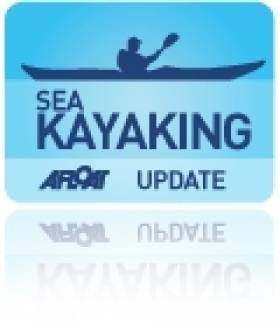Displaying items by tag: Mike Jones
Corkman Completes Round-Ireland Solo Sea Kayak Challenge
#SEA KAYAKING - It was a lucky Friday the 13th for Cork adventurer Mike Jones who returned to an enthusiastic reception on completing his solo circumnavigation of Ireland by kayak after 40 days at sea.
As previously reported on Afloat.ie, Jones set out from Cobh on Monday 4 June in an 18-foot sea kayak with the aim of completing the charity challenge in under five weeks.
Unfortunately the tumultuous weather of the past few weeks put paid to those plans, but as he told the Cork Independent, he "wasn't that far off" the 35-day mark.
"The weather was of course very bad and it was a battle for the first few days of it," he added. "The longest day for me was crossing Donegal Bay up north where I was kayaking for about 17 hours which was pretty tiring."
Despite the rough conditions, Jones was well prepared for any and all eventualities, even using a VHF radio to keep in regular contact with the Irish Coast Guard and carrying a GPS tracker so visitors to his blog could track his daily progress.
And considering his pedigree as an open-water rower - he became one of the first Cork men to row across the Atlantic Ocean in 2010 - Jones was more than able for the job.
But he also admitted that the kindness he received from strangers was pivotal to his successful effort, which has so far raised almost €3,500 for the Children's Sunshine Home and LauraLynn House for children with life-limiting conditions.
The Cork Independent has more on the story HERE.





























































